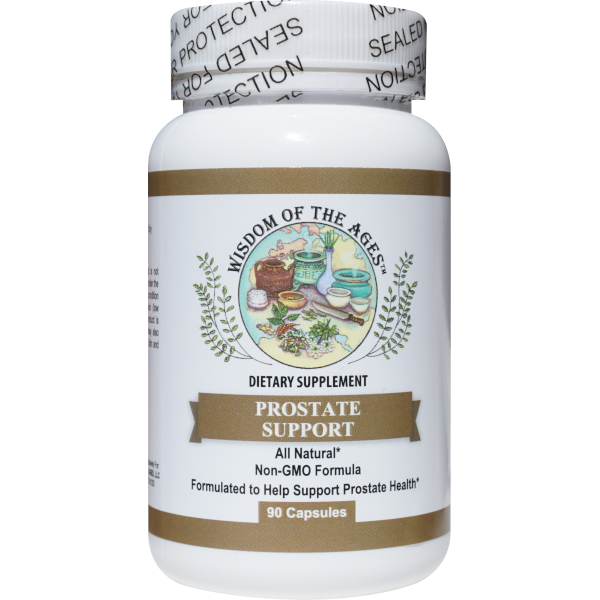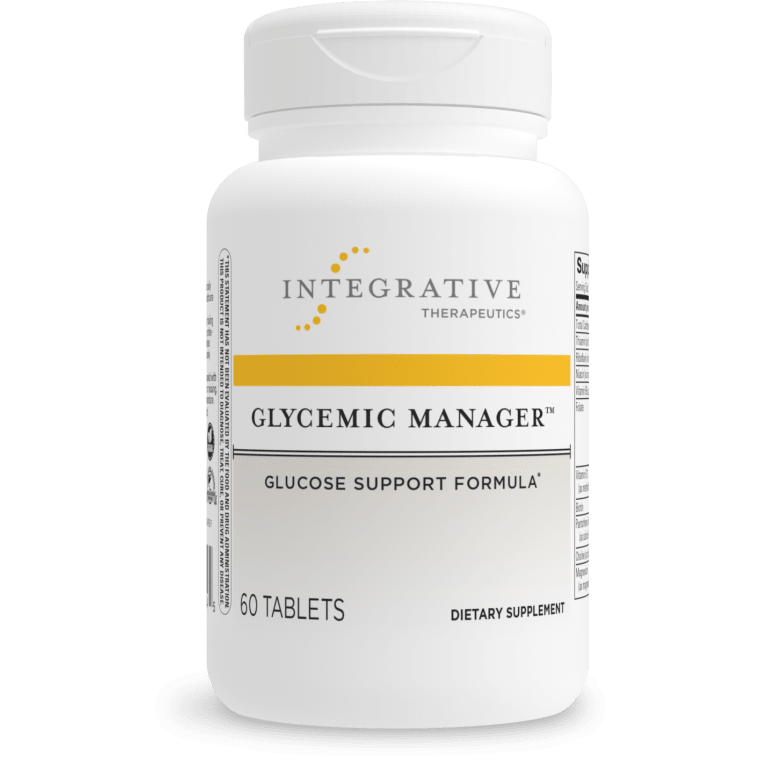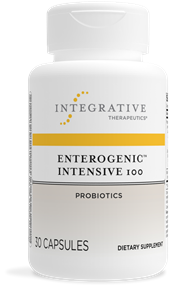Vitamin E Succinate 100 vegetarian capsules 70430
Vitamin E as d-alpha-tocopheryl acid succinate, as a dry powder in a hard-shell vegetarian capsule. Provides vitamin E, and succinate, which plays a role in the Krebs cycle, our major metabolic pathway for generating energy.*
Supplement Facts
Other ingredients: Hydroxypropyl methylcellulose, microcrystalline cellulose, silicon dioxide, L-leucine.
Keep in a cool, dry place, tightly capped.
Suggested Use: As a dietary supplement, 1 capsule one or two times daily with meals, or as directed by a healthcare practitioner.
Vitamin E Monogragh
Description
Vitamin E is a vitamin that dissolves in fat. It is found in many foods including vegetable oils, cereals, meat, poultry, eggs, and fruits.
Vitamin E is an important vitamin required for the proper function of many organs in the body. It is also an antioxidant. Vitamin E that occurs naturally in foods (RRR-alpha-tocopherol) is different from man-made vitamin E that is in supplements (all-rac-alpha-tocopherol).
Vitamin E is used for treating vitamin E deficiency, which is rare, but can occur in people with certain genetic disorders and in very low-weight premature infants. Vitamin E is also used for many other conditions, but there is no good scientific evidence to support many of these other uses.
Effectiveness Header
Natural Medicines rates effectiveness based on scientific evidence according to the following scale: Effective, Likely Effective, Possibly Effective, Possibly Ineffective, Likely Ineffective, Ineffective, and Insufficient Evidence to Rate.</div”>
- An inherited condition that affects motor control (ataxia with vitamin E deficiency or AVED). Taking vitamin E by mouth is effective for treating vitamin E deficiency due to this genetic movement disorder.
- Vitamin E deficiency. Taking vitamin E by mouth is effective for preventing and treating vitamin E deficiency.
Possibly Effective
- Alzheimer disease. Taking vitamin E supplements by mouth doesn’t seem to prevent Alzheimer disease from developing. But in people who already have Alzheimer disease, taking vitamin E along with some anti-Alzheimer medicines might slow down memory loss.
- A blood disorder that reduces levels of protein in the blood called hemoglobin (beta-thalassemia). Taking vitamin E by mouth seems to benefit children with this blood disorder.
- Menstrual cramps (dysmenorrhea). Taking vitamin E by mouth for 2 days before bleeding and for 3 days after bleeding starts seems to decrease pain and reduce menstrual blood loss.
- An inherited disorder that causes red blood cells to break down in response to stress (G6PD deficiency). Taking vitamin E by mouth, alone or together with selenium, might benefit people with this condition.
- Bleeding within the skull (intracranial hemorrhage). Taking vitamin E by mouth seems to reduce the risk of bleeding in the skull in premature infants.
- Bleeding into or around the fluid-filled areas (ventricles) of the brain (intraventricular hemorrhage). Giving vitamin E by mouth to premature infants can reduce the risk for bleeding into the brain. But giving high doses of vitamin E might increase the risk for a serious blood infection (sepsis) in these infants.
- Conditions in a male that prevent a female partner from getting pregnant (male infertility). Taking vitamin E by mouth improves pregnancy rates for males with fertility problems. But taking high doses of vitamin E together with vitamin C doesn’t seem to provide the same benefits.
- Reduced benefit of nitrate therapy that happens when nitrates are used all day (nitrate tolerance). Taking vitamin E by mouth daily can help prevent nitrate tolerance.
- Swelling (inflammation) and build up of fat in the liver in people who drink little or no alcohol (nonalcoholic steatohepatitis or NASH). Taking vitamin E by mouth daily seems to improve inflammation and liver markers of this form of liver disease in adults and children.
- Premenstrual syndrome (PMS). Taking vitamin E by mouth seems to reduce anxiety, craving, and depression in some people with PMS.
- A movement disorder often caused by antipsychotic drugs (tardive dyskinesia). Taking vitamin E by mouth seems to improve symptoms associated with this movement disorder.
Possibly Ineffective
An eye disease that leads to vision loss in older adults (age-related macular degeneration or AMD). Taking vitamin E by mouth, alone or along with other antioxidants, isn’t effective for preventing or treating age-related vision loss.
- Lou Gehrig’s disease (amyotrophic lateral sclerosis or ALS). Taking vitamin E (alpha-tocopherol) by mouth along with conventional medication doesn’t affect function or increase survival rates in people with ALS.
- Chest pain (angina). Taking vitamin E by mouth might have some effect on the functioning of blood vessels, but it doesn’t appear to reduce chest pain.
- Hardening of the arteries (atherosclerosis). Taking vitamin E (RRR-alpha-tocopherol) by mouth doesn’t appear to reduce the hardening of arteries in people with this condition.
- Eczema (atopic dermatitis). Taking vitamin E by mouth, alone or along with selenium, doesn’t improve symptoms of eczema.
- Hot flashes in people treated for breast cancer. Taking vitamin E by mouth doesn’t seem to reduce hot flashes in females who have had breast cancer.
- A lung disease that affects newborns (bronchopulmonary dysplasia). Taking vitamin E by mouth doesn’t seem to reduce an infant’s risk for developing this lung disease.
- Cancer. Taking vitamin E by mouth doesn’t seem to lower overall cancer risk.
- Cataracts. Taking vitamin E by mouth doesn’t prevent cataracts.
- Nerve damage in the hands and feet caused by cancer drug treatment. Taking vitamin E before and after treatment with certain cancer drugs does not reduce the risk of nerve damage.
- Colon cancer, rectal cancer. Taking vitamin E by mouth doesn’t reduce the risk for colon cancer or rectal cancer.
- Heart failure and fluid build up in the body (congestive heart failure or CHF). Taking vitamin E by mouth for 12 weeks doesn’t seem to improve heart function in people with CHF. It also doesn’t decrease the chance of developing CHF.
- Head and neck cancer. Taking vitamin E by mouth daily doesn’t seem to reduce the risk of head and neck cancer returning. In fact, it might actually increase the risk of the cancer returning. People with head and neck cancer should avoid daily vitamin E supplements in doses of more than 400 IU daily.
- High blood pressure. Taking vitamin E by mouth doesn’t seem to lower blood pressure in people already taking blood pressure medications.
- Infants with birth weight below the 10th percentile due to inadequate nutrition. Taking vitamin E by mouth throughout pregnancy doesn’t lower the risk of having a baby with a low birth weight because of inadequate nutrition while in the womb.
- Liver disease. Taking vitamin E by mouth doesn’t reduce the risk of death in people with liver disease.
- White patches inside the mouth that are usually caused by smoking (oral leukoplakia). Taking vitamin E by mouth for up to 7 years doesn’t reduce the risk for mouth sores in males who smoke.
- Osteoarthritis. Taking vitamin E by mouth doesn’t seem to decrease pain or stiffness in people with osteoarthritis. Vitamin E also doesn’t seem to prevent osteoarthritis from becoming worse.
- Pancreatic cancer. Taking vitamin E by mouth, alone or together with other antioxidants such as beta-carotene and vitamin C, doesn’t seem to reduce the risk for pancreatic cancer.
- Parkinson disease. Taking vitamin E by mouth doesn’t seem to reduce or slow the worsening of Parkinson disease symptoms.
- A type of throat cancer (pharyngeal cancer). Taking vitamin E by mouth doesn’t seem to reduce the risk of mouth or pharyngeal cancer in people with diabetes.
- A pregnancy complication marked by high blood pressure and protein in the urine (pre-eclampsia). Taking vitamin E by mouth doesn’t seem to reduce the risk of high blood pressure during pregnancy.
- Preterm birth. Taking vitamin E by mouth during pregnancy doesn’t lower the risk for preterm birth.
- Prostate cancer. Taking vitamin E by mouth doesn’t reduce the risk for prostate cancer. It might actually increase the risk in some people.
- Infection of the airways. Taking vitamin E by mouth doesn’t seem to help prevent respiratory tract infections. It also doesn’t seem to lessen symptoms in people with a respiratory infection.
- An inherited eye condition that causes poor night vision and loss of side vision (retinitis pigmentosa). Taking vitamin E by mouth doesn’t seem to slow vision loss, and might actually increase vision loss in people with this condition.
- An eye disorder in premature infants that can lead to blindness (retinopathy of prematurity). Giving vitamin E by mouth or by IV to premature infants doesn’t lower the risk for retinopathy. High doses of vitamin E might also increase the risk for a serious blood infection in these infants. IV products can only be given by a healthcare provider.
- Scarring. Applying vitamin E to the skin doesn’t seem to reduce scarring after surgery.
- Stillbirth. Taking vitamin E by mouth throughout pregnancy doesn’t lower the risk of stillbirth.
Likely Ineffective
- Non-cancerous breast disorders. Taking vitamin E by mouth doesn’t help treat non-cancerous breast disorders, also known as benign breast disease.
- Breast cancer. Increasing vitamin E intake from the diet or taking vitamin E supplements by mouth doesn’t reduce the risk for breast cancer.
- Heart disease. Taking vitamin E by mouth doesn’t prevent heart disease in healthy people or those at risk. It also doesn’t seem to prevent stroke or heart attack in people with heart disease.
- Death of an unborn or premature baby. Giving vitamin E by mouth to preterm infants doesn’t seem to reduce the risk of death in the infant.
- Lung cancer. Taking vitamin E by mouth for up to 8 years doesn’t reduce the risk of developing lung cancer in males who smoke.
- Death from any cause. Taking vitamin E by mouth doesn’t reduce the risk of death from any cause.
- Growth and development in premature infants. Giving vitamin E by mouth doesn’t seem to prevent or treat anemia in preterm infants.
There is interest in using vitamin E for a number of other purposes, but there isn’t enough reliable information to say whether it might be helpful.</div”>
Vitamin E Safety
When taken by mouth: Vitamin E is likely safe for most people when taken in doses lower than 1000 mg daily. This is the same as 1100 IU of synthetic vitamin E (all-rac-alpha-tocopherol) or 1500 IU of natural vitamin E (RRR-alpha-tocopherol). The risk of side effects increases with higher doses. Side effects can include nausea, fatigue, headache, and bleeding. Vitamin E is possibly unsafe when taken in doses greater than 1000 mg daily.
When applied to the skin: Vitamin E is likely safe for most people.
When inhaled: Vitamin E is possibly unsafe. Use of e-cigarettes and other vaping products containing vitamin E acetate has been linked to serious lung injury in some people.
Special Precautions & Warnings:
Pregnancy: When used in the recommended daily amount, vitamin E is possibly safe during pregnancy. Do not take vitamin E supplements during the first 8 weeks of pregnancy without speaking with your healthcare provider. It might be harmful to the baby. Later in pregnancy, the maximum recommended amount of vitamin E is 800 mg in those 14-18 years of age and 1000 mg in those older than 18 years of age.
Breast-feeding: Vitamin E is likely safe when taken by mouth in recommended daily amounts. The maximum recommended amount of vitamin E while breast-feeding is 800 mg in those 14-18 years of age and 1000 mg in those older than 18 years of age. Vitamin E is possibly unsafe when taken in doses greater than the maximum recommended amount.
Children: Vitamin E is likely safe when taken by mouth appropriately. But children should avoid taking doses of vitamin E higher than the daily upper limits. These limits are 300 IU in children 1-3 years of age, 450 IU in children 4-8 years of age, 900 IU in children 9-13 years of age, and 1200 IU in children 14-18 years of age.
Bleeding disorders: Vitamin E might make bleeding disorders worse. If you have a bleeding disorder, avoid taking vitamin E supplements.
Heart disease: Vitamin E might increase the risk for death in people with a history of heart disease. People with a history of heart disease should avoid taking doses of vitamin E greater than 400 IU daily.
Diabetes: Vitamin E might increase the risk for heart failure in people with diabetes. People with diabetes should avoid taking doses of vitamin E greater than 400 IU daily.
Head and neck cancer: Vitamin E might increase the chance that this cancer will return. Do not take vitamin E supplements in doses greater than 400 IU daily.
Weak and brittle bones (osteoporosis): Exercise is sometimes used by people with osteoporosis to improve bone strength. Exercising and taking high doses of vitamin E and vitamin C might lessen the benefits of exercise on bone strength.
Prostate cancer: Vitamin E might increase the chance of developing prostate cancer. The effect of vitamin E in people who currently have prostate cancer isn’t clear, but it might worsen the condition.
An inherited eye condition that causes poor night vision and loss of side vision (retinitis pigmentosa): All-rac-alpha-tocopherol (synthetic vitamin E) 400 IU seems to speed vision loss in people with this condition. But much lower amounts (3 IU) don’t seem to have this effect. If you have this condition, it is best to avoid vitamin E supplements.
Stroke: Vitamin E might increase the risk for death in some people with a history of stroke. People with a history of stroke should avoid taking doses of vitamin E greater than 400 IU daily.
Surgery: Vitamin E might increase the risk of bleeding during and after surgery. Stop using vitamin E supplements at least 2 weeks before a scheduled surgery.
Drug Interactions
Cyclosporine (Neoral, Sandimmune)
Interaction Rating=Moderate Be cautious with this combination.
Taking large amounts of vitamin E along with cyclosporine (Neoral, Sandimmune) might increase how much cyclosporine (Neoral, Sandimmune) the body absorbs. By increasing how much cyclosporine the body absorbs, vitamin E might increase the effects and side effects of cyclosporine (Neoral, Sandimmune).
Medications changed by the liver (Cytochrome P450 3A4 (CYP3A4) substrates)
Interaction Rating=Moderate Be cautious with this combination.
Some medications are changed and broken down by the liver.Vitamin E might increase how quickly the liver breaks down some medications. Taking vitamin E along with some medications that are broken down by the liver can decrease the effectiveness of some medications. Before taking vitamin E talk to your healthcare provider if you are taking any medications that are changed by the liver.Some medications changed by the liver include lovastatin (Mevacor), ketoconazole (Nizoral), itraconazole (Sporanox), fexofenadine (Allegra), triazolam (Halcion), and many others.
Medications for cancer (Chemotherapy)
Interaction Rating=Moderate Be cautious with this combination.
Vitamin E is an antioxidant. There is some concern that antioxidants might decrease the effectiveness of some medications used for cancers. But it is too soon to know if the interaction occurs.
Medications that slow blood clotting (Anticoagulant / Antiplatelet drugs)
Interaction Rating=Moderate Be cautious with this combination.
Vitamin E might slow blood clotting. Taking vitamin E along with medications that also slow clotting might increase the chances of bruising and bleeding.Some medications that slow blood clotting include aspirin, clopidogrel (Plavix), diclofenac (Voltaren, Cataflam, others), ibuprofen (Advil, Motrin, others), naproxen (Anaprox, Naprosyn, others), dalteparin (Fragmin), enoxaparin (Lovenox), heparin, warfarin (Coumadin), and others.
Medications used for lowering cholesterol (Statins)
Interaction Rating=Moderate Be cautious with this combination.
Taking vitamin E, beta-carotene, vitamin C, and selenium together might decrease the effectiveness of some medications used for lowering cholesterol. It is not known if taking vitamin E alone decreases the effectiveness of some medications used for lowering cholesterol.Some medications used for lowering cholesterol include atorvastatin (Lipitor), fluvastatin (Lescol), lovastatin (Mevacor), and pravastatin (Pravachol).
Niacin
Interaction Rating=Moderate Be cautious with this combination.
Taking vitamin E along with beta-carotene, vitamin C, and selenium might decrease some of the beneficial effects of niacin. Niacin can increase the good cholesterol. Taking vitamin E along with these other vitamins might decrease the good cholesterol.
Warfarin (Coumadin)
Interaction Rating=Moderate Be cautious with this combination.
Warfarin (Coumadin) is used to slow blood clotting. Vitamin E can also slow blood clotting. Taking vitamin E along with warfarin (Coumadin) can increase the chances of bruising and bleeding. Be sure to have your blood checked regularly. The dose of your warfarin (Coumadin) might need to be changed.
Herb Interactions
Beta-carotene: Taking vitamin E 800 IU daily seems to reduce blood levels of beta-carotene. Higher doses of vitamin E may reduce beta-carotene even more.
Herbs and supplements that might slow blood clotting: Vitamin E might slow blood clotting and increase the risk of bleeding. Taking it with other supplements with similar effects might increase the risk of bleeding in some people. Examples of supplements with this effect include garlic, ginger, ginkgo, nattokinase, and Panax ginseng.
Iron: Large doses of vitamin E might reduce how much iron is absorbed by the body in infants with low iron levels. Low doses of vitamin E do not seem to have this effect. Avoid high doses of vitamin E in infants. It isn’t known whether this interaction occurs in adults.
Omega-6 fatty acids: Taking omega-6 fatty acids, especially in high doses, may increase the amount of vitamin E that the body needs.
Vitamin A: Vitamin E might change how much vitamin A is absorbed by the body. But this probably isn’t a major concern for most people.
Vitamin K: Large doses of vitamin E can decrease the effects of vitamin K. This might increase the risk of bleeding in people taking warfarin or other medicines that slow blood clotting. People with low vitamin K levels might be at especially high risk.</div”>
Food Interactions
There are no known interactions with foods.
Dosage
Vitamin E is an important nutrient. Vegetable oils, cereals, meat, poultry, eggs, fruits, and wheat germ oil are good sources of vitamin E. The amount that should be consumed on a daily basis is called the recommended dietary allowance (RDA). The RDA for natural vitamin E (RRR-alpha-tocopherol) in adults is 15 mg (22 IU), 15 mg (22 IU) during pregnancy, and 19 mg (28 IU) when breastfeeding.
Keep in mind that the doses of natural vitamin E (RRR-alpha-tocopherol) and vitamin E that has been made in the lab (all-rac-alpha-tocopherol) are calculated differently. This can make supplement dosing confusing. The American Heart Association recommends obtaining vitamin E by eating a well-balanced diet rather than from supplements until more is known about the risks and benefits of these supplements.
Other Names
Acétate d’Alpha Tocophérol, Acétate d’Alpha Tocophéryl, Acétate de D-Alpha-Tocophéryl, Acétate de DL-Alpha-Tocophéryl, Acétate de Tocophérol, Acétate de Tocophéryl, Acétate de Vitamine E, All Rac-Alpha-Tocopherol, All-Rac-Alpha-Tocophérol, Alpha-Tocophérol, Alpha Tocopherol Acetate, Alpha Tocopheryl Acetate, Alpha tocotrienol, Alpha tocotriénol, Alpha-tocopherol, Alpha-Tocophérol, Beta tocotrienol, Bêta-tocotriénol, Beta-tocopherol, Bêta-tocophérol, Concentré de Tocotriénol, D-Alpha Tocopherol, D-Alpha Tocophérol, D-Alpha Tocopheryl Succinate, D-Alpha Tocopheryl Acetate, D-Alpha Tocotrienol, D-Alpha Tocotriénol, D-Alpha-Tocopherol, D-Alpha-Tocophérol, D-Alpha-Tocopheryl Acetate, D-Alpha-Tocopheryl Acid Succinate, D-Alpha-Tocopheryl Succinate, D-Alpha-Tocopheryl, D-Alpha-Tocophéryl, D-Beta-Tocopherol, D-Bêta-Tocophérol, D-Delta-Tocopherol, D-Delta-Tocophérol, Delta Tocotrienol, Delta-Tocotriénol, Delta-tocopherol, Delta-tocophérol, D-Gamma Tocotrienol, D-Gamma-Tocotriénol, D-Gamma-Tocopherol, D-Gamma-Tocophérol, DL-Alpha-Tocopherol, DL-Alpha-Tocophérol, DL-Alpha-Tocopheryl Acetate, DL-Alpha-Tocopheryl, DL-Alpha-Tocophéryl, DL-Tocopherol, DL-Tocophérol, D-Tocopherol, D-Tocophérol, D-Tocopheryl Acetate, Fat-Soluble Vitamin, Gamma tocotrienol, Gamma-tocotriénol, Gamma-tocopherol, Gamma-tocophérol, Mixed Tocopherols, Mixed Tocotrienols, Palm Tocotrienols, Rice Tocotrienols, RRR-Alpha-Tocopherol, RRR-Alpha-Tocophérol, Succinate Acide de D-Alpha-Tocophéryl, Succinate Acide de Tocophéryl, Succinate de D-Alpha-Tocophéryl, Succinate de Tocophéryl, Succinate de Vitamine E, Tocopherol Acetate, Tocopherol, Tocophérol, Tocophérols Mixtes, Tocotriénols de Palme, Tocotriénols de Riz, Tocotriénols Mixtes, Tocopheryl Acetate, Tocopheryl Acid Succinate, Tocopheryl Succinate, Tocotrienol, Tocotriénol, Tocotrienol Concentrate, Tocotrienols, Tocotriénols, Vitamin E Acetate, Vitamin E Succinate, Vitamina E, Vitamine E, Vitamine Liposoluble, Vitamine Soluble dans les Graisses.
Disclaimer
Natural Medicines disclaims any responsibility related to medical consequences of using any medical product. Effort is made to ensure that the information contained in this monograph is accurate at the time it was published. Consumers and medical professionals who consult this monograph are cautioned that any medical or product related decision is the sole responsibility of the consumer and/or the health care professional. A legal License Agreement sets limitations on downloading, storing, or printing content from this Database. Except for any possible exceptions written into your License Agreement, no reproduction of this monograph or any content from this Database is permitted without written permission from the publisher. Unlawful to download, store, or distribute content from this site.
For the latest comprehensive data on this and every other natural medicine, health professionals should consult the Professional Version of the Natural Medicines. It is fully referenced and updated daily.
© Copyright 1995-2021. Therapeutic Research Faculty, publishers of Natural Medicines, Prescriber’s Letter, and Pharmacist’s Letter. All rights reserved.
Contact us for a naturopathic consultation.





